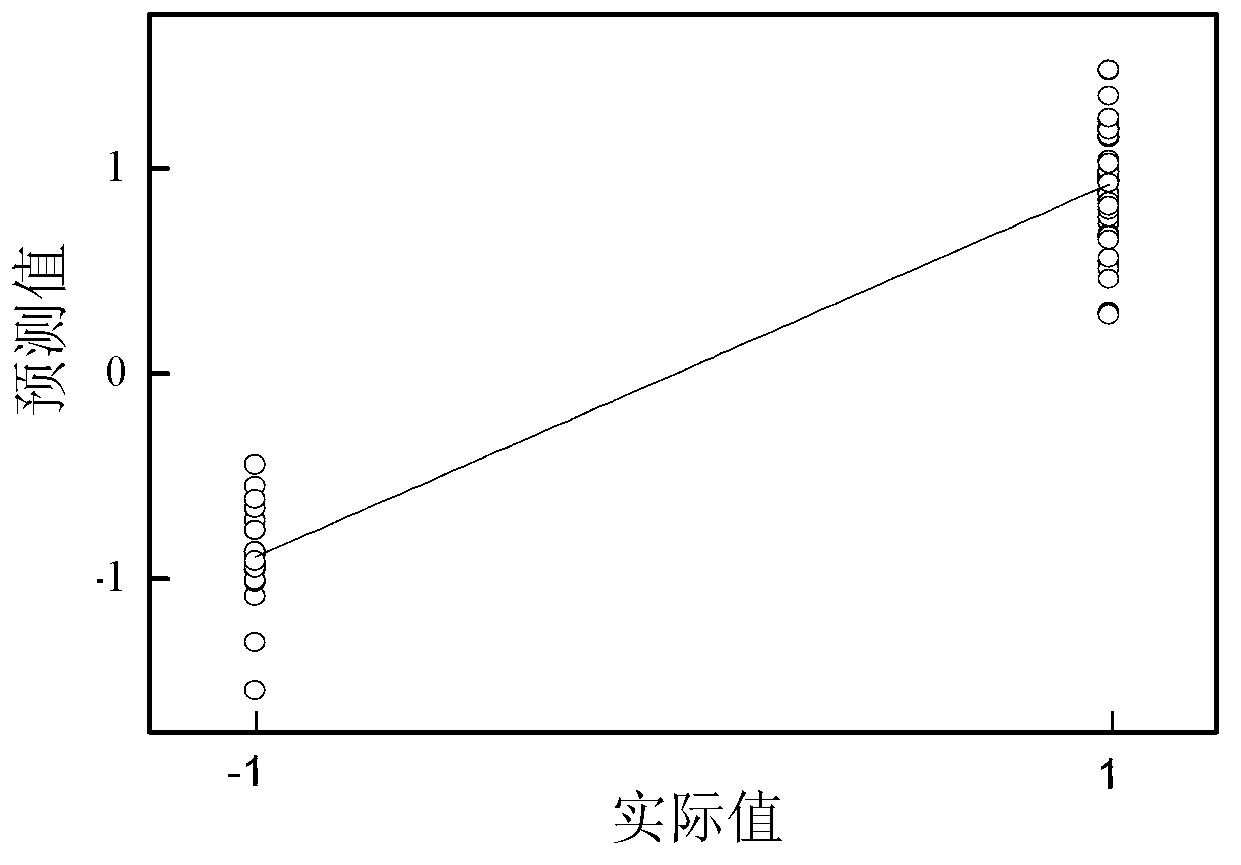Method for identifying transgenic rice and non-transgenic rice based on NIR (Near Infrared Spectrum)
A near-infrared spectroscopy and transgenic rice technology, which is applied in the field of detection of transgenic plants, can solve the problems of complicated operation steps, complicated detection methods, long time-consuming and the like, and achieves the effects of high identification accuracy, non-destructive identification and simple operation.
- Summary
- Abstract
- Description
- Claims
- Application Information
AI Technical Summary
Problems solved by technology
Method used
Image
Examples
Embodiment 1
[0028] 1. Build a model
[0029] (1) Select 80 transgenic rice seeds and 40 non-transgenic rice seeds as rice seed samples, and use a Nicolet Nexus870 (Thermo Corporation USA) Fourier transform near-infrared spectrometer to emit wavenumbers ranging from 4000 to 10000 cm to the rice seed samples -1 The near-infrared spectrum, using OMNIC 6.0 software to collect the diffuse reflectance spectra of all rice seed samples; set the number of scans of the near-infrared spectrometer to 32 times, with a resolution of 4cm -1 . During collection, the room temperature was controlled at about 25°C, and the humidity was kept stable.
[0030] The above-mentioned transgenic rice is TCTP gene transgenic rice and Osmi166 gene transgenic rice, and its acquisition method can be: the transgenic material adopts the mature embryo of rice respectively as explant induction, cultures callus, selects embryogenic callus as transformation recipient, Transgenic rice was obtained by transforming Agrobacter...
Embodiment 2
[0050] 1. Build a model
[0051] (1) With embodiment 1.
[0052] (2) Use the standard normal transformation method to preprocess the diffuse reflectance spectra of all rice seed samples to obtain the preprocessed spectral information; use the principal component analysis method in the Unscrambler software to extract the wave number range after each pretreatment 4000~8000cm -1 For the spectral feature information in the spectral section, the number of principal components is selected as 5, and the scores of each principal component are obtained (as shown in Table 4);
[0053] (3) Take the principal component scores corresponding to the spectral information of all rice seed samples as input, and use the rice seed type setting value corresponding to the rice seed sample as the output to establish the PLS-DA model; the rice seed type setting corresponding to the rice seed sample The values were set as follows: TCTP-transgenic rice and mi166-transgenic rice were set to -1, and ...
PUM
| Property | Measurement | Unit |
|---|---|---|
| Wave number | aaaaa | aaaaa |
Abstract
Description
Claims
Application Information
 Login to View More
Login to View More - R&D
- Intellectual Property
- Life Sciences
- Materials
- Tech Scout
- Unparalleled Data Quality
- Higher Quality Content
- 60% Fewer Hallucinations
Browse by: Latest US Patents, China's latest patents, Technical Efficacy Thesaurus, Application Domain, Technology Topic, Popular Technical Reports.
© 2025 PatSnap. All rights reserved.Legal|Privacy policy|Modern Slavery Act Transparency Statement|Sitemap|About US| Contact US: help@patsnap.com

